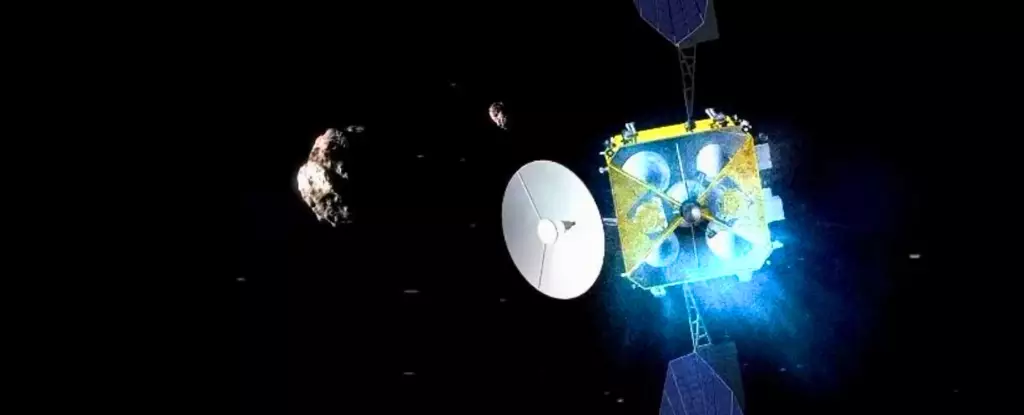In a remarkable display of ambition and scientific prowess, China has embarked on its first-ever mission to retrieve samples from an asteroid, marking a significant milestone in global space exploration. According to Xinhua, the launch transpired early Thursday morning when a Long March-3B rocket propelled the Tianwen-2 probe from the Xichang launch site—an event that speaks volumes about China’s uncompromising commitment to its burgeoning space program. Over recent years, Beijing has heavily invested billions into its extraterrestrial initiatives, aiming to achieve what President Xi Jinping terms the nation’s “space dream.” This mission is not merely a point of pride; it is an essential step towards establishing China as a formidable player in the cosmic arena.
Expanding the Cosmic Frontier
The Tianwen-2 mission isn’t just an exploration for the sake of curiosity; it’s a determined pursuit of groundbreaking scientific inquiry. Sending this probe towards asteroid 2016HO3—an object that is both a cosmic relic and a valuable research asset—holds the potential to significantly enhance our understanding of the origins of the Solar System. The probe is designed to collect samples from this near-Earth asteroid, which is approximately 40 to 100 meters in diameter and consists of primordial materials from the early Solar System. This can give scientists insights into cosmic processes that occurred billions of years ago.
Furthermore, the mission aims to study comet 311P, an object that uniquely straddles the line between the characteristics of asteroids and comets, thereby presenting a fascinating area of study for researchers. Such scientific endeavors could lead to revelations that reshape our understanding of celestial mechanics and planetary formation. The sheer length of the Tianwen-2 mission—projected to span around a decade—reflects the intricate planning and long-term thinking that underpin China’s space aspirations.
A New Era of Space Race
China’s entry into asteroid exploration takes place at a time when numerous nations are vying for dominance in space. The race to explore and inhabit celestial bodies, such as the Moon and Mars, has acquired a new vigor, and China is not merely a participant but an assertive contender. Its achievements, including landing robotic rovers on both Mars and the Moon and establishing the Tiangong space station—referred to as the “celestial palace”—have positioned China as an equal contender in the global space landscape.
The recent success of the Tianwen-2 probe launch serves as a testament to the rapid advancements in China’s technological prowess and its strategic plan to become a leader in space exploration. This determination resonates with humanity’s enduring desire to explore the unknown and push the boundaries of our knowledge. The implication is clear: as China’s ambition continues to grow, so does the possibility of new collaborative ventures in space exploration, inviting other nations to partake in this extraordinary journey.
Implications for Humanity
Shan, as reported by Xinhua, openly expressed optimism about the ambitious mission, hoping it would yield discoveries that could expand humanity’s understanding of the universe. This highlights the mission’s overarching significance not just for China, but for the collective advancement of human knowledge. The insights gleaned from the samples could potentially transform our grasp of cosmic history and, intermittently, our place within it. As we stand on the brink of what could be one of the most thrilling chapters in our exploration of the cosmos, it is evident that missions like Tianwen-2 are about much more than just scientific data—they are about inspiring future generations and igniting the adventurous spirit of humanity.

